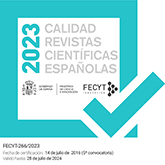Examination of determining factors of species richness: the case of Aphodiinae (Coleoptera, Scarabaeoidea, Aphodiidae) at the Iberian Peninsula
DOI:
https://doi.org/10.3989/graellsia.2003.v59.i2-3.240Keywords:
Aphodiinae, Scarabaeoidea, coprophagous Coleoptera, determining factors of species richness, Iberian PeninsulaAbstract
In the present article, variables that explain the Aphodiinae (Aphodiidae, Coleoptera) species richness at the Iberian Peninsula were explored, only considering previous faunistic studies and using the Generalized Linear Models statistic procedures. Data from 30 faunistic studies taken from the literature were analysed to examine the factors which have an influence on the species richness of this group. For each location, 22 variables were compiled, referred to topographic, geographic, environmental diversity, climatic, type of soils, and cattle customs factors. After eliminating area effects, several climatic, type of soils, cattle customs and geographic factors were able to explain the variation on Iberian Aphodiinae species richness. However, a function which made up the aridity index and the percentage of siliceous soils variable would gather all the variation on species richness distribution of Iberian Aphodiinae caused by environment. This fact showed the present correlation between these two variables with the other significant ones. Variance hierarchical partitioning techniques exhibited that climatic factors were the most influent on the species richness, followed by the type of soils, cattle customs and geographic ones. Nevertheless, space per se was able to explain more than all the environmental variables together, so some other variables which were not considered could better resume the variation on Aphodiinae richness. Distribution of Iberian Aphodiinae richness showed two areas with a higher number of species located southwards and in the north-western part of the peninsula. In our opinion, such variable would be of historic-geographic nature, and so: 1) Iberian Aphodiinae fauna would be constituted by two principal species groups of different origins and physic-climatic adaptations (a Palaearctic or cold-temperate group and a Mediterranean or Afrotropical group); and 2) the separated distribution of Aphodiinae richness centres would represent the most favourable areas at present, that give refuge to each one of these faunistic groups. Moreover, the fact of an accumulated species richness on the north-western part of the peninsula would be one of the evidences which reflect the Iberian Peninsula role both as a colonization route and as a refuge during glacial/interglacial cycles.
Downloads
Download data is not yet available.
Downloads
Published
2003-12-30
How to Cite
1.
Cabrero-Sañudo FJ, Lobo JM. Examination of determining factors of species richness: the case of Aphodiinae (Coleoptera, Scarabaeoidea, Aphodiidae) at the Iberian Peninsula. Graellsia [Internet]. 2003Dec.30 [cited 2024May15];59(2-3):155-77. Available from: https://graellsia.revistas.csic.es/index.php/graellsia/article/view/240
Issue
Section
Research Articles
License
Copyright (c) 2003 Consejo Superior de Investigaciones Científicas (CSIC)

This work is licensed under a Creative Commons Attribution 4.0 International License.
© CSIC. Manuscripts published in both the printed and online versions of this Journal are the property of Consejo Superior de Investigaciones Científicas, and quoting this source is a requirement for any partial or full reproduction.All contents of this electronic edition, except where otherwise noted, are distributed under a “Creative Commons Attribution 4.0 International” (CC BY 4.0) License. You may read here the basic information and the legal text of the license. The indication of the CC BY 4.0 License must be expressly stated in this way when necessary.
Self-archiving in repositories, personal webpages or similar, of any version other than the published by the Editor, is not allowed.













